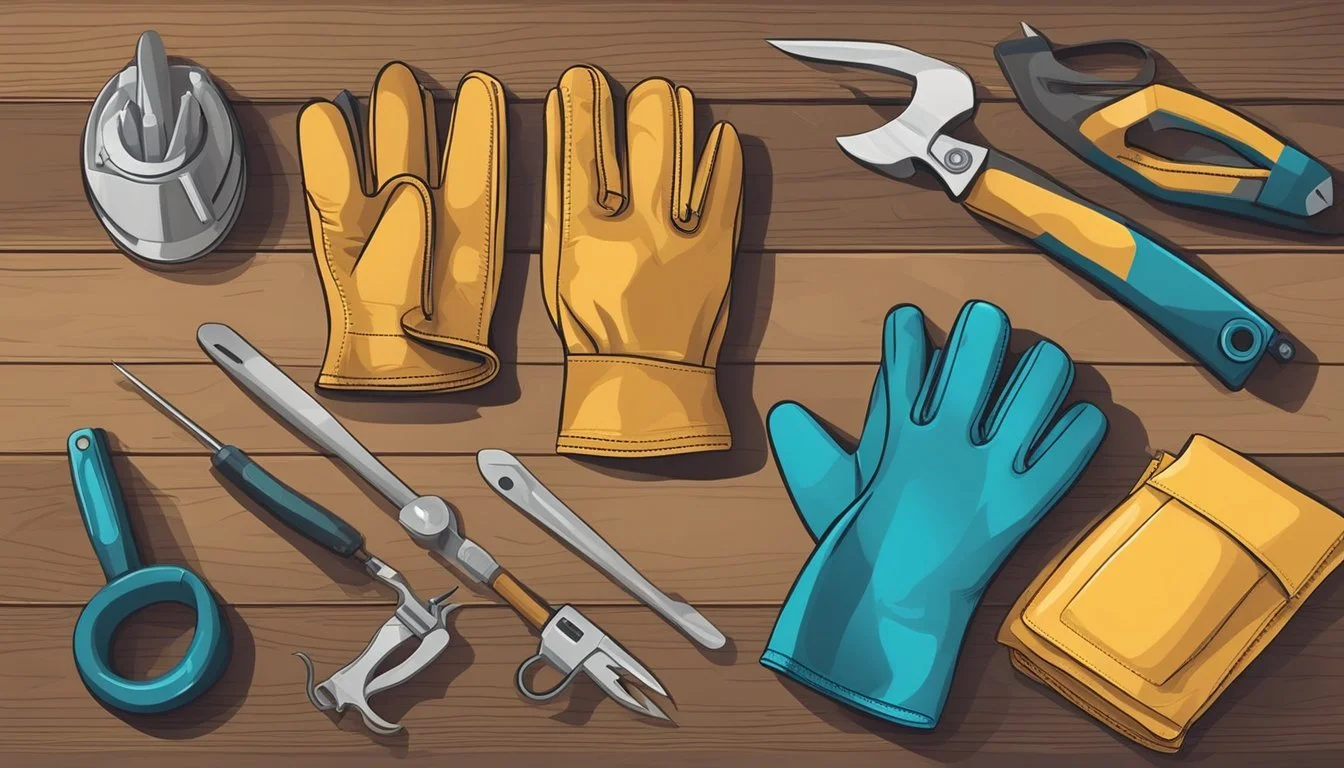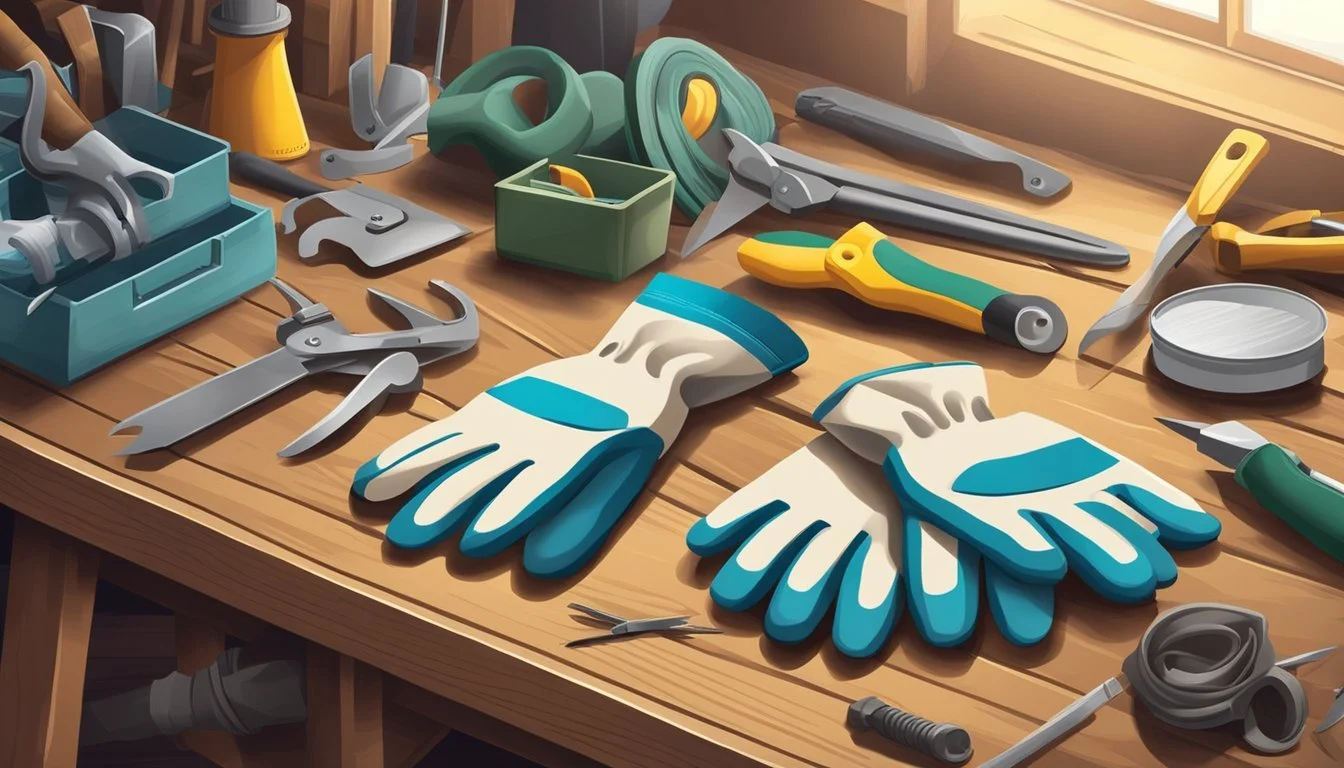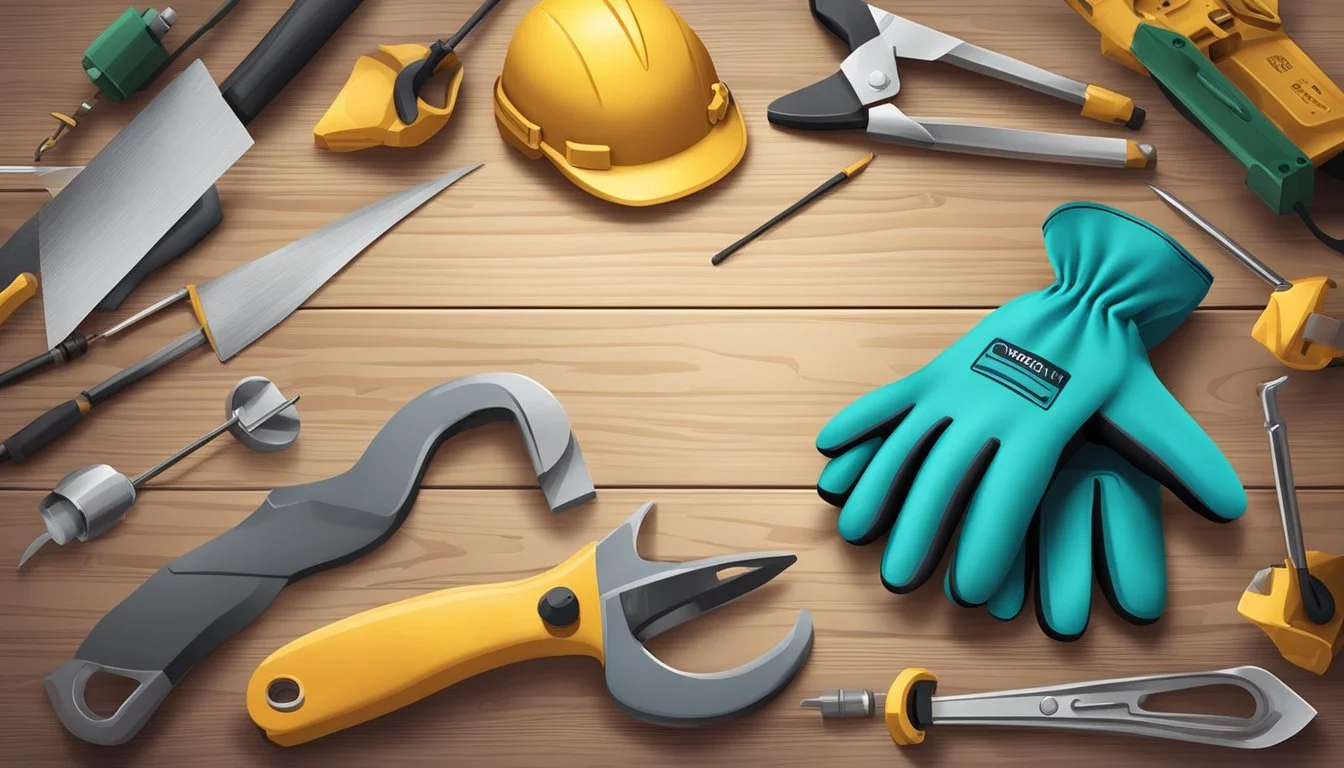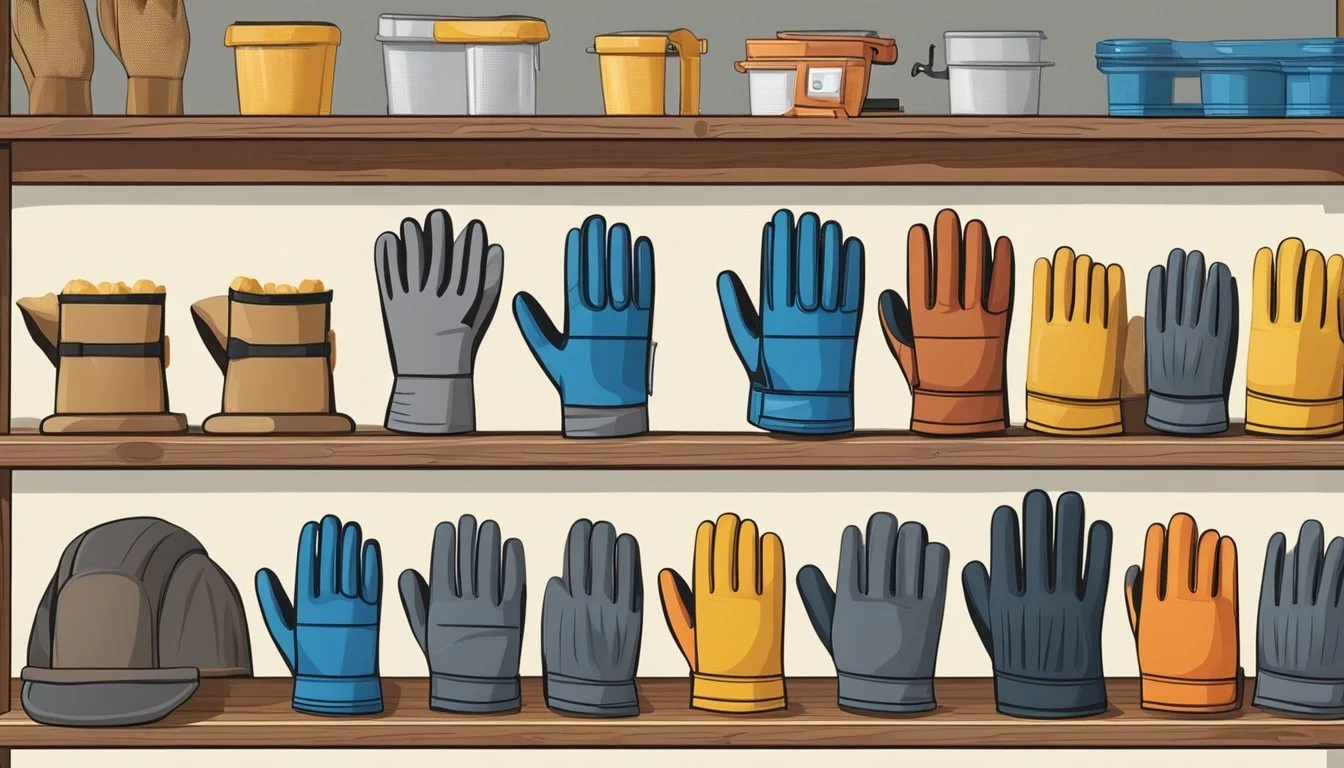The Best Work Gloves for Homestead Labor
Ultimate Hand Protection Guide
In the realm of labor-intensive tasks, particularly on a homestead where versatility and durability are necessities, the selection of appropriate work gloves is vital for hand protection. Homesteaders encounter a range of demanding activities, from gardening to fence-building, each presenting unique challenges to the hands. The best work gloves not only shield the hands from scrapes and blisters but also enhance grip and dexterity, allowing for safer and more efficient work. High-quality gloves offer a layer of defense against the ravages of physical labor, safeguarding one of a worker's most valuable tools: their hands.
Identifying the optimal pair of work gloves depends on the specific tasks at hand. Materials such as synthetic suede and leather offer robustness and longevity, crucial for heavy-duty work, while coated gloves provide added grip in slippery conditions. For cold environments, insulated gloves maintain warmth without sacrificing mobility, ensuring tasks can be completed without losing manual agility. On the other hand, breathability is paramount in warmer climates to keep hands cool and comfortable throughout long working hours.
Understanding Work Gloves
The proper selection and utilization of work gloves are crucial in ensuring safety and efficiency during labor-intensive tasks on the homestead.
Types of Work Gloves
Cut-resistant gloves: Employed in environments with sharp tools, these gloves are often made from metal mesh or high-strength fibers like Kevlar or Dyneema.
Cold-resistant gloves: Necessary for work in frigid conditions or cold storage areas, these can be made from materials like Thinsulate that trap heat without excessive bulk.
Chemical-resistant gloves: These are essential when handling harmful substances and typically consist of nitrile, neoprene, or PVC to provide a protective barrier.
General utility gloves: Usually made from synthetic leather or nylon, they offer a balance between comfort and durability for various tasks.
Choosing the Right Materials
Selecting the right materials is pivotal for ensuring durability, comfort, and protection:
Leather gloves: Ideal for rugged work, they offer durability and improve grip. Leather types include cowhide, pigskin, and deerskin.
Cotton and fabric gloves: These gloves provide breathability and comfort in less hazardous tasks and can be coated with latex or nitrile for added grip and protection.
Synthetic gloves: Materials such as synthetic leather or nylon mix durability with flexibility and are often used for precision work where dexterity is key.
Key Features of Quality Gloves
A set of well-designed work gloves will have features that enhance their functionality:
Reinforced palms and fingertips: Added layers in high-wear areas for increased longevity.
Adjustable closures: Such as Velcro or elastic cuffs ensure a secure fit and prevent debris from entering.
Dexterity: Gloves should allow the wearer to perform tasks without undue restriction.
Breathability: Ventilation is important to prevent moisture accumulation and maintain comfort during extended use.
Protection and Safety
When selecting work gloves for homestead chores, it is essential to prioritize features that safeguard against specific risks such as cuts, extreme temperatures, and hazardous chemicals. Gloves must provide the necessary defense to reduce injuries while maintaining comfort and dexterity.
Cuts and Abrasions
For tasks involving sharp tools or rough materials, gloves with cut-resistant technology are fundamental. Gloves made from high-strength yarns or interwoven Kevlar offer substantial protection against cuts and abrasions. Some options integrate metal mesh for enhanced safety, particularly in environments with a high risk of lacerations.
Materials: Kevlar, metal mesh
Common Uses: Handling blades, working with wood or metal edges
Heat and Chemical Resistance
Those exposed to high temperatures or destructive substances should utilize gloves that resist heat and chemicals effectively. Gloves treated with special coatings like rubber or latex can provide a barrier against chemical exposure, while options designed with thermal-resistant materials are suited for handling hot objects.
Protection Against:
Heat: Thermal-resistant materials
Chemicals: Rubber or latex coatings
Cold Weather and Impact Guards
Working in cold environments calls for gloves with cold-resistant features, which might include insulated materials or specific designs that trap warmth. For protection against impacts, gloves may have palm padding or reinforced areas to absorb shocks. This padding not only provides warmth but also acts as a buffer against heavy blows or vibration injuries.
Essential Features:
Insulation for cold weather
Palm padding for impact reduction
By addressing these considerations and selecting the appropriate gloves for various risks, individuals can ensure a higher level of hand protection and safety while performing labor-intensive tasks on the homestead.
Performance and Dexterity
When selecting work gloves for labor-intensive tasks on the homestead, two crucial considerations are how well the gloves allow for fine motor skills and how they let hands breathe and move. The tactile sensitivity, flexibility, and fit of a glove directly influence the wearer's efficacy in performing tasks that demand precision.
Grip and Tactility
Grip is paramount when handling tools and materials. Gloves like the Wells Lamont HydraHyde Leather Work Gloves offer a balance between sturdiness and tactility, ensuring a solid grasp while maintaining a sensitive touch. The presence of textured coatings, such as latex, found in budget options like the G&F Products All Purpose Gloves, significantly enhances grip in various conditions.
Enhanced grip features:
Textured latex or silicone surfaces
Leather palm overlays for durability
Dexterity and Freedom of Movement
The design of a glove can greatly influence the dexterity and freedom of movement a wearer experiences. For detail-oriented work, gloves like the Dex Fit FN330 Work Gloves are engineered to allow nimbleness and precision, simulating the feel of working with bare hands.
Key components for dexterity:
Pre-curved finger design
Stretchable fabric backhands
Breathability and Fit
A glove's breathability determines the wearer’s comfort during extended use and their hands' susceptibility to fatigue. Materials like those in the Mechanix Wear Original Glove not only offer a snug fit but also ensure the hands stay cool and dry, reducing the chances of irritation. A proper fit contributes to both comfort and functionality; thus, a precise fit is crucial.
Breathability factors:
Perforated or mesh back fabrics
Moisture-wicking linings
Specialized Work Gloves
When selecting specialized work gloves for various labor-intensive tasks on the homestead, it's essential to consider the specific protection each type offers. These gloves are designed with features tailored to safeguard hands during particular jobs involving power tools, hygiene-sensitive tasks, or high-durability requirements.
Padded Palm and Power Tool Gloves
For those who frequently operate power tools, gloves with padded palms provide much-needed cushioning and vibration reduction. Padded palm gloves are not only comfortable but also lessen the likelihood of blisters and hand fatigue during extended use. A top choice for handling heavy machinery or power tools, these gloves often feature materials like gel or foam within the palm area for maximum impact absorption.
Recommended for: Drilling, Sawing, Hammering
Material Considerations: Gel, Foam, Leather, Duraclad
Maintenance: Typically not machine-washable due to material construction
Disposable Gloves for Hygiene
In tasks where cleanliness is paramount, a good pair of disposable gloves is essential. These gloves provide a barrier against contaminants, liquids, and pathogens. Easy to put on and discard after each use, they come in various materials such as latex, nitrile, or PVC.
Types: Latex, Nitrile, PVC
Best For: Food Processing, Gardening, Medical Applications
Features: Puncture-resistant options, various levels of elasticity and fit
Mechanic and High-Durability Gloves
Mechanic gloves need to be tough to withstand oil, grease, and the wear and tear of handling tools. These gloves often integrate materials like synthetic leather and Duraclad reinforcements that resist abrasions and ensure longevity. Many mechanic gloves are also designed to be machine-washable, which helps in maintaining hygiene and performance over time.
Material: Synthetic Leather, Duraclad
Durability Aspects: Abrasion-resistant, Tear-resistant
Additional Features: Touchscreen compatibility, form-fitting design for dexterity
Workplace Safety Regulations
Workplace safety regulations are critical to ensure the well-being of employees, mandating the use of personal protective equipment, adherence to OSHA standards, and consideration of industrial hygiene. These regulations are designed to prevent workplace injuries and safeguard against health risks such as carbon monoxide poisoning and workplace overdoses.
OSHA Standards
The Occupational Safety and Health Administration (OSHA) requires employers to provide hand protection when workers are exposed to various hazards, including extreme temperatures and harmful substances. Personal protective equipment (PPE), such as work gloves, must fit properly and be appropriate for the task to reduce the risk of injuries.
Hazard Assessment: Employers must conduct a thorough hazard assessment to determine the necessary type of hand protection.
Standards Compliance: Gloves must comply with specific OSHA standards like 29 CFR 1910.138 for hand protection.
Industrial Hygiene Considerations
Industrial hygiene focuses on controlling environmental factors that may lead to illness or impairment in the workplace. This includes monitoring for carbon monoxide poisoning from portable generators and implementing measures to prevent workplace overdoses.
Air Quality: Regular assessment of air quality can prevent exposure to harmful substances.
Substance Handling: Employees must use the correct PPE when handling solvents, oils, or chemicals to prevent skin absorption.
Workplace Injury Prevention
Preventing workplace injuries is a pivotal aspect of labor regulations. OSHA and child labor laws enforce strict guidelines to minimize the risk of severe cuts, lacerations, punctures, and abrasions.
Education & Training: Employees should receive training on proper PPE usage and safety procedures.
Equipment Maintenance: Routine inspection and maintenance of gloves and other protective gear ensure ongoing protection.
Technological Advancements
As the demand for safer and more efficient labor tools grows, technological innovations are making significant headway in the field of work gloves. These advancements not only enhance the durability and functionality of gloves but also integrate smart features that contribute to a safer work environment.
Smart Safety Gadgets
Intrinsically Safe Smartwatches have emerged as a game-changer for workers in hazardous environments. These devices are designed to prevent ignition in explosive atmospheres, complying with safety standards for temperature and electrical energy. They can signal alerts for hazardous conditions and monitor vital signs, ensuring workers' safety is constantly overseen.
SlateSafety Band V2 is another innovative gadget, worn on the wrist like a watch. It serves as a real-time alert system, streamlining communication between workers and supervisors. The device is especially vital in loud environments where traditional communication methods fail, and it allows for swift responses to potential dangers.
Improving Work Safety with Technology
Gloves with Integrated Technology: Work gloves now often come equipped with embedded sensors that can track location, monitor exertion levels, and provide data about repetitive strain, which can proactively prevent injuries.
Beacon V2 Environmental Monitor is a technological stride in personal protective equipment that continuously assesses the surrounding environment. It detects gases, temperature fluctuations, and other potential risks, enabling workers to stay informed about their safety in real-time. This device can be placed in key locations around a worksite to offer broad environmental monitoring.
Smart attachments to gloves for touch-screen compatibility allow workers to interact with digital devices without removing their gloves, maintaining protection at all times. These advancements are crucial in maintaining continuous workflow and safety oversight.
Glove Maintenance
Maintaining the durability and extending the life of a pair of work gloves is essential for labor-intensive tasks on the homestead. Proper care ensures high abrasion resistance and prevents premature wear.
Cleaning and Care Procedures
One must adhere to the manufacturer's guidelines when cleaning work gloves, as materials can vary. Leather gloves, for instance, should be gently cleaned with a damp cloth and treated with a leather conditioner to maintain flexibility and durability. For gloves lined with synthetic materials, a mild soap and warm water solution is typically safe, followed by air drying to prevent shrinkage or degradation.
Basic Cleaning Steps for Most Work Gloves:
Remove excess dirt: Brush off debris from the glove's surface.
Prepare cleaning solution: A mix of mild soap and water works for most gloves.
Hand-wash gloves: Gently work in the soap solution to clean.
Rinse thoroughly: Ensure all soap residue is gone.
Air-dry: Never expose gloves to direct heat, as it may damage the material.
When to Replace Work Gloves
Gloves should be inspected regularly for signs of wear and tear. They should be replaced when:
The glove's integrity is compromised: Look for holes, tears, or significant abrasions that could reduce protection.
Loss of flexibility or fit: If gloves no longer conform to the hand or restrict movement, they may hinder task performance.
Seams are fraying or coming apart: This can indicate that the glove is reaching the end of its useful life.
Observing the condition of work gloves and recognizing when to replace them is essential for hand safety and maintaining performance in labor-intensive jobs.
Buying Guide
When selecting work gloves for homestead tasks, it’s crucial to consider the specific type of labor and the level of protection needed. A well-informed choice ensures safety and efficiency during various activities.
Assessing Your Needs
Type of Work: Different tasks require different gloves. For instance, general labor may only need basic protection, while handling chemicals necessitates chemical-resistant gloves. Physical risks like cuts or punctures demand gloves made with more durable materials.
Protection Level: Gloves should offer adequate protection for the task at hand. Here’s a quick reference table to help determine the level of protection needed based on common types of labor:
Labor Type: General Handling, Protection Needed: Abrasion resistance
Labor Type: Gardening, Protection Needed: Puncture resistance
Labor Type: Chemical Handling, Protection Needed: Chemical resistance
Labor Type: Machinery Work, Protection Needed: Impact and cut resistance
Labor Type: Outdoor Work, Protection Needed: Insulation for temperature
Fit and Sizing
Proper Fit: Gloves must fit well to maintain dexterity. A glove that's too large can slip off or hinder movement, while one that's too small can restrict blood flow and reduce comfort.
Sizing Guide: Use a measuring tape to measure the circumference of the hand dominant for work around the palm area, excluding the thumb. Then, compare this measurement to the glove manufacturer's size chart to find the appropriate glove size. Here’s a simplified size chart example:
Hand Circumference (inches): 6 - 7, Glove Size: Small
Hand Circumference (inches): 7 - 8½, Glove Size: Medium
Hand Circumference (inches): 8½ - 10, Glove Size: Large
Hand Circumference (inches): 10+, Glove Size: Extra Large
In summary, when buying work gloves, carefully consider the type of work and the hand protection it requires. Ensure gloves fit snugly according to the sizing guides, so they contribute to both safety and task efficiency on the homestead.
Conclusion
In selecting the optimal work gloves, individuals must consider the specific demands of their tasks. Fabric gloves offer breathability and comfort, ideal for light yard work or carpentry. Conversely, leather work gloves provide durability and are well-suited for handling rough materials.
When working with machinery or moving parts, it's crucial to select gloves that enhance grip and protect against abrasions. Mechanix Wear tactical work gloves are often favored for their dexterity and protection in such environments.
For tasks requiring high precision, disposable gloves can suffice, whereas metal mesh gloves are indispensable for a foundry worker due to their cut resistance. Remember, the key to safety and efficiency lies in matching the glove to the hazard.
Glove Selection by Task:
Yard Work: Fabric gloves
Woodworking: Leather, fabric gloves
Machinery Operation: Mechanix Wear gloves
Foundry Work: Metal mesh gloves
Ultimately, work safety gloves are a critical component of any labor-intensive role. They not only shield the crew's hands but also contribute to the overall productivity and safety of the operations. Prioritize quality and specificity—it's a small step that could prevent workplace injuries.










